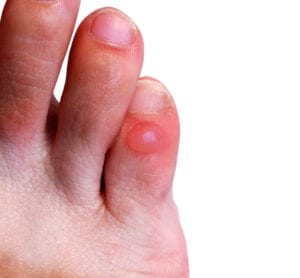Blisters are very common superficial skin lesion due to too much friction on the skin.
Blisters are small fluid-filled pockets that form on the skin as a result of friction, heat, or other irritants. They can be quite uncomfortable but usually heal on their own. However, there are several steps you can take to help alleviate discomfort and promote healing:
- Leave the blister intact: In most cases, it is best to avoid popping or draining the blister. The fluid inside acts as a natural barrier against infection. If the blister is large, painful, or likely to rupture on its own, it’s advisable to seek medical advice.
- Protect the blister: Cover the blister with a clean, sterile bandage or blister pad. This will help protect it from further friction or irritation and reduce the risk of infection. Make sure the bandage is large enough to extend beyond the edges of the blister to prevent rubbing.
- Apply a cushioning pad: To alleviate pressure on the blister, you can use a donut-shaped moleskin pad or other specialized blister cushions available at pharmacies. These pads have a hole in the center that fits over the blister, providing additional protection and reducing discomfort.
- Keep the area clean: Gently clean the blister and surrounding skin with mild soap and water. Avoid using alcohol or hydrogen peroxide, as they can delay healing. After cleaning, ensure the area is thoroughly dry before applying a new bandage.
- Wear appropriate footwear: If the blister is on your feet, wear well-fitting shoes with socks or padding that reduce friction. Avoid wearing shoes that are too tight or have rough interior surfaces. Moisture-wicking socks can also help keep your feet dry and prevent excessive friction.
- Give the blister time to heal: Blisters will typically heal on their own within a few days to a week. Avoid picking at or peeling the skin of the blister, as this can increase the risk of infection. If the blister does break, keep the area clean and apply an antibiotic ointment.
- Consider pain relief: If the blister is causing pain, over-the-counter pain relievers like acetaminophen or ibuprofen can help reduce discomfort. Always follow the instructions and consult a healthcare professional if you have any concerns or if the pain persists.
Remember, if a blister shows signs of infection (increased redness, swelling, warmth, pus, or increased pain), or if you have diabetes or other underlying health conditions, it’s essential to seek medical attention promptly.

